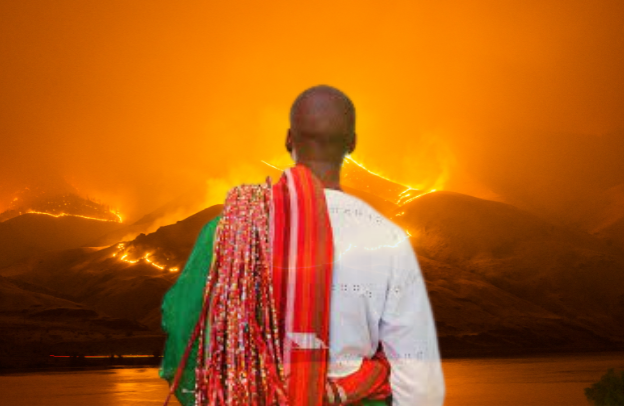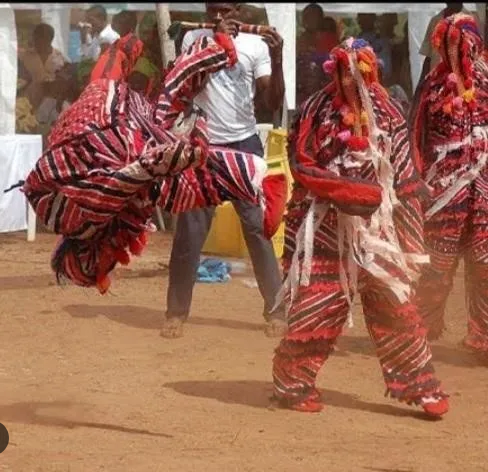Esan Cultural Events And Festivals

Learn about Esan cultural events and festivals. Culture is one facet in pinpointing a person’s identity and ethnicity. Nigeria, as known, has astronomical ethnic groups with distinct cultures. Esan is among the 250 ethnic groups in the country with a unique cultural heritage.
Download the first chapter of The Storytelling Series: Beginners’ Guide for Small Businesses & Content Creators by Obehi Ewanfoh.
The Esans have an undeniable wealth of history and a fleet of feasts that speaks strongly about the people from past to present.
This article explores some of the Esans cultures and important feasts read on and unearth some of these cultural practices.
Here is another article you might like – Esan Unity: The Bedrock For Sustainable Development
New Yam Festival
Just as some ethnic groups in Nigeria celebrate the new yam festival, the Esans equally hold this festivity which all Esans- those at home and abroad deem important and endeavor to partake in. In Esanland, the new yam festival called HUAN is observed around September to November every year.
Yam crop remains a central crop in Esanland to the point that an Esan man won’t admit to having nibbled any food until he’s served yam dishes which come in the form of a pounded yam paired with Egusi, Ogbolo, or black herbal soup, a roasted yam or porridge yam.
There’s a lore regarding the preference of the yam crop in Esanland; however, the narrative varies among the people.
It’s deemed an abomination- more accurately speaking; it’s forbidden in the olden days for people to relish a newly harvested yam without due formalities- the actual celebration of the harvested yams performed clan by clan or community by community in Esanland.
Two weeks prior to the celebration of the newly harvested yam, the villagers (Esans) will vent all their efforts, cleaning the public places or squares, clearing tousle paths in the village and setting of canopies, etc., for the forthcoming event.
To mark the actual commencement of the event, the Onojie, or traditional ruler of the clan, in the company of the palace chiefs, will hobble to the shrine of the named deity responsible for the bountiful harvest to praise and make sacrifices to it.
This elegant procession to the shrine of the deity is supported by an earsplitting drum beat and cheers from a few people. Once the traditional ruler rounds up the sacrifices at the deity’s shrine, the people will start their merriment, eating different delicacies prepared with yam crops and drinking palm wine to their hearts content.
Check out also this article – Esan Geography And Topography – South of Nigeria
In spicing up the merriment, different dancers will perform before the throng with the Esans dance styles.
Hair Washing (IHOETOA) And Naming Ceremony
The Esans tagged child naming ceremony important from ages- same applies to some other ethnic groups in Nigeria; however, it comes with its differences in these ethnic groups. In Esanland, three months after a child’s delivery, the washing ceremony dawns, and it’s solemnly marked by the loss of a hairstyle (ETO OMON) plaited fourteen days before the ceremony. Before the commencement of the hair washing feast, the throng will gather, singing and rejoicing, and animals like pigs, antelope, and sheep will be slaughtered and used in the preparation of food.
Thereafter, the new mother, whose hair has been heaped up in EKASA (a native yellow soap), will be thoroughly washed; this act is accompanied by people’s humming of songs and praise. After the hair washing ceremony, the naming ceremony ensues.
The Esans are firm believers in reincarnation; some other ethnic groups share this cake too. Due to this strong belief in reincarnation, all Esans avoid naming a child before its birth.
Prior to the child’s birth, the parents will visit the native doctor and confirm the name of the person that the child reincarnated or rather its profession which the child will most likely take up once they come of age. Once the priest confirms the name of the child, it will be concealed within the household until the appointed day.
On the appointed day for the child naming, the throng will gather at the rendezvous point, and the baby will be brought out and handed to the eldest among the throng. The elder will throw the baby up, specifically thrice, wording some things like “I name you UGHULU,” meaning “Vulture,” which the crowd will mute no response; again, he will raise the child the second time wording “I name you ITUKU” meaning “Rubbish” which will be followed by a deafening silence by the crowd and final raise the elder will pronounce the child’s actual name, hence, the throng will cheer and greet the baby with new untold blessings.
Marriage Ceremony
Marriage is yet another essential ceremony the Esans perform. There are three ways of taking a wife in Esanland;
First- through the dowry system: the suitors pay an exorbitant price to take a bride home.
Two- by inheritance: here, an heir inherits a wife after the demise of his father. If the woman happens to be the deceased’s only wife, the heir’s uncle will inherit the wife.
Third- through betrothing: by this, the prospective suitor of an unborn fetus will make his intention known to the pregnant woman and her husband. To further prove his genuine intentions, he will prepare gifts like yam and palm oil for the pregnant woman. He’ll be serving the bride’s family until her ripping age.
After the female circumcision and declaration of the bride’s innocence, she will be sent to her husband’s place in the company of male and female members of her family.
While on their way, they would stumble on some trees and other barriers warranting the request for aid from the prospective husband, which the latter will dispatch some relatives to help clear the obstacles.
On arrival at the husband’s abode, the party that brought the girl will reveal some terms to the man regarding the girl’s delinquency, lack of proper kitchen skills, etc., and leaves the husband to shoulder the responsibility of nurturing and educating her in those areas. After this, the groom’s female relatives will count the girl on the lap of her husband she sits on and stop at the (eleventh count) accompanied by cheers, singing, dancing, and shooting of guns.
Female Circumcision Ceremony
The Esans pays due respect to virtuous and chaste girls. Prior to the marriage ceremony, the bride will be circumcised; however, before proceeding with the circumcision, the OWENAN (a female surgeon) will access the girl to ensure she’s still chaste.
When a girl is confirmed not chaste, it will be a big disgrace to the family, and it also attracts some fines. Contrarily, once the girl is clearly declared innocent, the family members will erupt into joy, and rain the bride with praises likewise the mother.
Then the husband’s relatives will visit the girl, showering her with gifts like coral beads; the mother will be given presents like a keg of palm oil, yam, and monetary gifts for her strict watchful eyes and training of the girl.
When the cheers die off, the OWENAN proceeds to trim the girl’s clitoris. The bride readies herself for public displays and announcements five days after the wound heals.
This display is to divulge the girl’s innocence to the public, which is clearly done with the bride being stark naked (the Esans believe only sinners wouldn’t be proud to withstand this public display). So if a girl is confirmed chaste, then moving bare in the public comes with huge respect.
Note: circumcision is performed when the girl comes of age which is at age sixteen.
You might also like to read – Esan Entrepreneurship (The Value Of Handwork)
Ukpe Festival
In Esanland, the term Ukpe means (year) and the Ukpe festival, as it’s called, is an annual festival usually observed around December and January in all the villages in Esanland – Ebelle, Ogwa, etc. to appreciate the gods for their protection and equally plead with them to bring prosperity in the Esanland. The festival usually lasts for four days.
Oto Uromi Festival
The oto Uromi festival is a day festival held in Uromi land to plead to the gods for a more bountiful harvest. Usually, the festival takes place in July or the beginning of August.
A public announcement will be made weeks prior to the festival, and it’s customary for all the villagers to withdraw from going to their farms on that day.
Written by Juliet Emmanuel for African Docs Project
Download the first chapter of The Storytelling Series: Beginners’ Guide for Small Businesses & Content Creators by Obehi Ewanfoh.







4 Comments